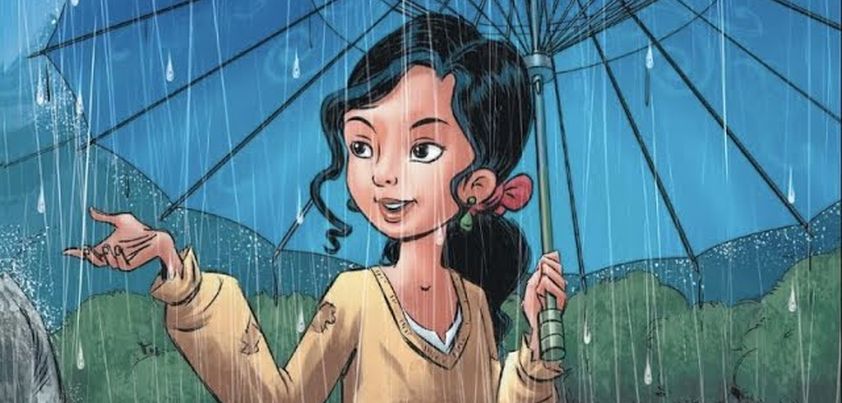 In this story by Ruskin Bond, a poor girl from the Himalayan foothills trades her tiger’s-claw lucky charm for a magnificent, though impractical silk umbrella. She is the envy of her village, and vainly parades it everywhere she goes. The village teashop owner covets the umbrella, and tries to acquire it by fair means and foul. Ultimately, the girl and shop owner realize their mutual folly. The girl gives him the umbrella, which he shares with the whole village, and she is greatly rewarded for her kindness. Themes include innocence, beauty, vanity, envy, materialism and greed, compassion, kindness and generosity.
In this story by Ruskin Bond, a poor girl from the Himalayan foothills trades her tiger’s-claw lucky charm for a magnificent, though impractical silk umbrella. She is the envy of her village, and vainly parades it everywhere she goes. The village teashop owner covets the umbrella, and tries to acquire it by fair means and foul. Ultimately, the girl and shop owner realize their mutual folly. The girl gives him the umbrella, which he shares with the whole village, and she is greatly rewarded for her kindness. Themes include innocence, beauty, vanity, envy, materialism and greed, compassion, kindness and generosity.
It is interesting to note how the symbolism of the umbrella changes as the story develops. Initially, it symbolizes beauty and the joy of childhood innocence. As the umbrella becomes a source of envy and is coveted by the teashop owner, it represents the power of materialism and greed to divide a community. Later, as it fades and needs repair, the umbrella comes to exemplify the passing nature of superficial beauty and, as the girl sees the error of her ways, the transformative power of kindness and generosity.